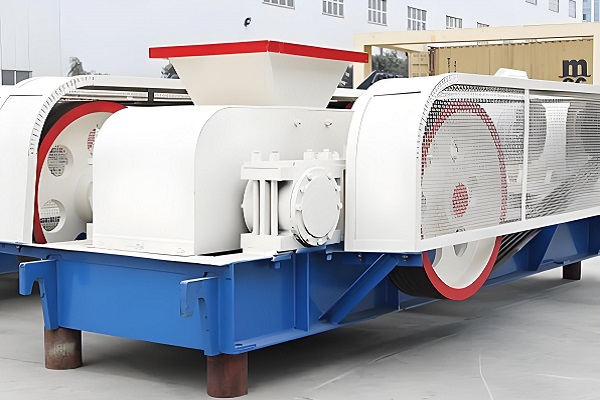
Double roll crusher is a kind of efficient material crushing equipment. This equipment has the advantages of simple structure, small size, low noise, easy maintenance, etc. It is widely used in environmental protection, mining, metallurgy, chemical industry, building materials and other industries. Double roll crusher has become an indispensable and important equipment in many industrial fields with its efficient and reliable crushing performance.
Double roll crusher, also known as secondary roll crusher or double roll crusher, is a kind of mechanical equipment widely used in mining, metallurgy, chemical industry, building materials, electric power and other industries. The following is a detailed introduction to the double roll crusher:
1. Structural composition of double roll crusher
The double roll crusher is mainly composed of crushing roll, frame, transmission device, adjustment device and safety device. Among them, the crushing roll is the core component of the double roll crusher, which is usually made of wear-resistant materials such as high manganese steel or special carbon steel (chrome steel, chrome manganese steel, etc.), with a toothed or smooth surface design to meet the crushing needs of different materials. The frame is generally cast in cast iron, and can also be welded or riveted with steel sections, requiring the structure to be strong.
2. Application fields of double roll crusher
Double roll crusher is widely used in mining, metallurgy, chemical industry, building materials, electric power and other industries. In the mining industry, it is mainly used for crushing ore; in the metallurgical industry, it can be used to crush coke, slag and other materials; in the chemical industry, it can be used to crush various chemical raw materials; in the building materials industry, it can be used to crush limestone, refractory materials and other materials; in the power industry, it can be used to crush coal and other fuels.
3. Performance characteristics of double-roll crusher
a. Large crushing ratio: The double-roll crusher can effectively crush large pieces of material into small particles, with a high crushing ratio, which can meet the crushing needs of different industries.
b. Stable operation: The equipment structure is relatively simple, the operation is stable and reliable, the failure rate is low, and the maintenance is convenient.
c. Uniform particle size: By adjusting the gap between the two rollers, the particle size of the crushed product can be controlled, so that the particle size of the crushed material is uniform and meets the production requirements.
d. Sensitive overload protection: The equipment is equipped with an overload protection device. When entering a non-crushed object, it can automatically stop for protection to avoid equipment damage.
e. Small footprint: The equipment is small in size and small in footprint, which is easy to install and move.
4. Maintenance and care of double-roll crusher
In order to ensure the normal operation and extend the service life of the double-roll crusher, regular maintenance and care are required. Mainly include the following aspects:
a. Regularly check and replace worn parts such as bearings, rollers, etc.
b. Keep the equipment lubricated, select appropriate lubricants, and add them regularly and quantitatively.
c. Clean the equipment regularly to remove dust, debris and other impurities.
d. Pay attention to check the tension and wear of the belt, and replace the new belt in time.
e. Check whether the fasteners are loose, and tighten the loose parts immediately.
f. Adjust the distance between the rollers according to production needs to maintain the appropriate crushing effect.
PS: The double-roll crusher plays an important role in many industries with its unique structure and working principle. Through regular maintenance and care, the normal operation of the equipment and the extension of its service life can be ensured, providing strong support for the production and development of the enterprise.
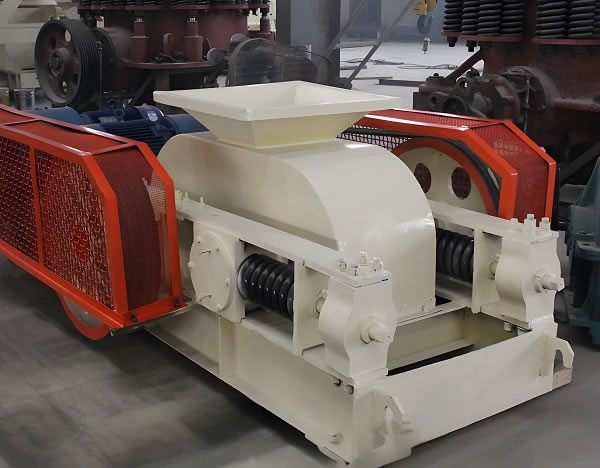
The purchase of a double-roll crusher involves multiple key factors, and it is necessary to comprehensively consider multiple factors such as production needs, crushing effect, equipment performance, after-sales service and maintenance costs, as well as price and budget. By comprehensively evaluating these factors, you can choose a double-roll crusher model that suits your needs and provide strong support for the production and development of the enterprise.
1. Clarify production needs a. Processing capacity: According to the amount of material that needs to be processed per hour or per day, select a double-roll crusher with corresponding processing capacity. Ensure that the selected equipment can meet production needs and avoid insufficient production capacity or waste. b. Material properties: Consider the hardness, toughness, humidity and particle size distribution of the material. For materials with higher hardness, choose a crusher with stronger crushing capacity; for materials with higher humidity, consider the wear resistance and anti-blocking ability of the equipment.
2. Pay attention to the crushing effect a. Discharge particle size: Clarify the specific requirements of the product for the discharge particle size, including the maximum particle size, average particle size and particle size distribution range. This will determine the crushing ratio and adjustment range of the double-roll crusher to ensure that the crushed material can meet the subsequent process requirements. b. Crushing efficiency: Choose equipment with high crushing efficiency and low energy consumption to reduce operating costs and achieve green production.
3. Evaluate equipment performance a. Stability and durability: Evaluate equipment vibration, noise level, failure rate and other indicators. Choose models that have been verified by long-term operation and have stable and reliable performance. b. Energy consumption and energy efficiency ratio: Choose double-roll crushers with low energy consumption and high energy efficiency ratio to reduce production costs.
4. Consider after-sales service and maintenance costs a. After-sales service: Choose manufacturers with good reputation and reputation to ensure equipment quality and reliability of after-sales service. Understand the manufacturer's after-sales service system, including support for equipment installation, commissioning, training and post-maintenance. b. Maintenance cost: Understand the maintenance cost of the equipment and the replacement cycle and cost of wearing parts. Choose a crusher model that is easy to maintain, has sufficient spare parts supply and reasonable cost to reduce maintenance difficulty and cost.
5. Field inspection and trial machine demonstration If conditions permit, field inspection and trial machine demonstration are the best way to evaluate equipment performance. By observing the operating status, crushing effect and ease of operation of the equipment on site, we can more intuitively understand the consistency between the actual performance of the equipment and the manufacturer's publicity.
The rollers is wear-resisting chromium molybdenum copper alloy with long service.
This crusher is equipped with motorless scraper. When the raw material has high moisture content.
The gap between the rollers is adjustable, so that the output size and capacity will be changed accordingly.
According to requirement, it could be in flat roller or toothed roller.
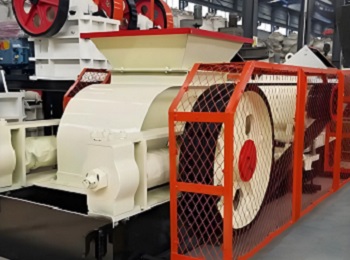
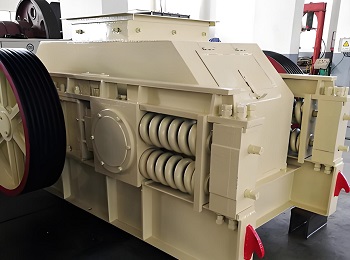
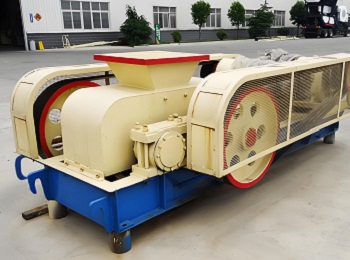
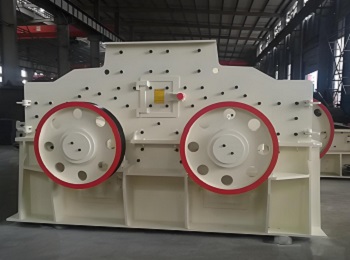
The materials to be crushed fall from the feeding mouth to the space between the two rolls.After being squeezed and crushed, the final products will naturally fall. When there are too hard materials or materials that cannot be crushed, the rolls of the roller crusher will automatically withdraw under the effect of hydraulic cylinder or spring to increase the gap between the rolls, and the too hard materials or the materials that cannot be crushed will fall down.Thus protecting the machine from being damaged. There is a certain gap between the two rolls that rotate at the opposite direction, and the maximum discharging granularity of the final products can be controlled by changing this gap. Double roller crusher's the materials by relying on the two round rollers rotating at the opposite direction, and four-roll crusher crushes the materials by relying on the two pairs of round rollers rotating at the opposite direction.

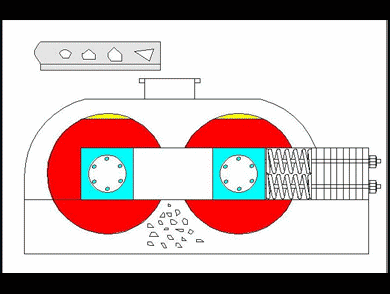
| Model |
Roller Diameter (mm) |
Roller Length (mm) |
Feeding Size (mm) |
Capacity (t/h) |
Motor Power (kw) |
| ZDRC-400X250 | 400 | 250 | ≤ 25 | 2-10 | 2*5.5 |
| ZDRC--610X400 | 610 | 400 | ≤ 30 | 5-20 | 2*15 |
| ZDRC--610X750 | 610 | 750 | ≤ 30 | 5-25 | 2*18.5 |
| ZDRC--750X400 | 750 | 400 | ≤ 30 | 10-40 | 2*18.5 |
| ZDRC--800X600 | 800 | 600 | ≤ 40 | 12-50 | 2*22 |
| ZDRC--800X800 | 800 | 800 | ≤ 40 | 20-60 | 2*22 |
| ZDRC--900X900 | 900 | 900 | ≤ 50 | 50-100 | 2*37 |
| ZDRC--1200X900 | 1200 | 900 | ≤ 50 | 60-130 | 2*45 |
| ZDRC--1200X1200 | 1200 | 1200 | ≤ 50 | 80-150 | 2*45 |
*The output will vary according to different materials, feed particle size and other factors.
Save Time! Get A Detailed Quotation Quickly.
